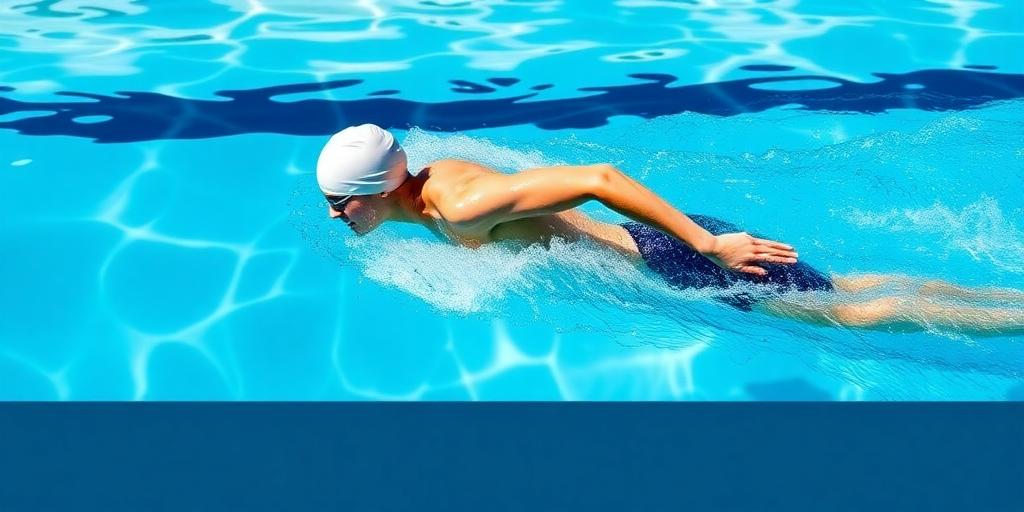Swimming Injury Prevention: Perfecting Your Stroke
Swimming is a fantastic full-body workout that's gentle on the joints, making it a popular choice for people of all ages and fitness levels. However, like any sport, swimming carries a risk of injury if proper techniques aren't followed. This article will cover common swimming injuries and provide strategies for prevention by focusing on perfecting your stroke.
Common Swimming Injuries
Before diving into prevention, it's important to understand the injuries swimmers are prone to:
- Swimmer's Shoulder (Impingement/Rotator Cuff Tendinitis): This is the most common swimming injury, resulting from repetitive arm movements that can inflame the tendons around the shoulder joint.
- Knee Pain (Breaststroker's Knee): The whip-kick in breaststroke can put stress on the medial collateral ligament (MCL) in the knee.
- Lower Back Pain: Excessive rotation and extension in the back during freestyle and butterfly can lead to lower back pain.
- Neck Pain: Holding the head in an unnatural position while breathing can strain the neck muscles.
Perfecting Your Stroke: Injury Prevention Strategies
The best way to prevent swimming injuries is to perfect your technique. Here's how:
1. Freestyle:
- Body Position: Maintain a streamlined body position to reduce drag and stress on your shoulders and back. Keep your core engaged and hips high in the water.
- Arm Stroke: Enter the water with your fingertips first, extending forward. Rotate your body as you pull through the water, and finish the stroke past your hip.
- Breathing: Rotate your head to the side to breathe, keeping one goggle in the water. Avoid lifting your head too high, which can strain your neck.
2. Backstroke:
- Body Position: Keep your body horizontal in the water with your ears submerged. Engage your core to maintain a stable position.
- Arm Stroke: Reach back with one arm, rotating your shoulder as you pull through the water. Alternate arms in a continuous motion.
- Kick: Use a flutter kick, keeping your legs relatively straight and kicking from your hips, not your knees.
3. Breaststroke:
- Body Position: Maintain a streamlined body position with your face in the water, except when breathing.
- Arm Stroke: Sweep your arms outward in a semi-circular motion, then bring them together under your chest. Coordinate your arm stroke with your kick.
- Kick: Use a whip kick, bending your knees and bringing your heels towards your buttocks before kicking outward and snapping your legs together.
4. Butterfly:
- Body Position: Keep your body horizontal in the water, using a dolphin kick to generate propulsion.
- Arm Stroke: Bring both arms forward over the water, then pull them through the water simultaneously. Coordinate your arm stroke with your kick.
- Breathing: Lift your head forward to breathe as your arms exit the water.
Additional Injury Prevention Tips
- Warm-up: Before each swim, warm up with dynamic stretches like arm circles, leg swings, and torso twists. This will prepare your muscles for activity and reduce your risk of injury.
- Cool-down: After each swim, cool down with static stretches, holding each stretch for 20-30 seconds. This will help improve flexibility and reduce muscle soreness.
- Proper Equipment: Use properly fitted goggles, swim caps, and swimwear to reduce drag and improve comfort.
- Progressive Overload: Gradually increase your training volume and intensity over time. Avoid doing too much too soon, which can increase your risk of injury.
- Listen to Your Body: Pay attention to any pain or discomfort you may be experiencing, and rest or seek medical attention if necessary.
- Strength Training: Incorporate strength training exercises into your routine to strengthen the muscles that support your shoulders, back, and knees. Focus on exercises that target the rotator cuff, core, and legs.
- Flexibility Training: Regularly stretch your shoulders, back, hips, and legs to improve flexibility and range of motion.
- Professional Guidance: Consider working with a swim coach to refine your technique and develop a training plan that's tailored to your individual needs and goals.
Conclusion
By focusing on perfecting your stroke and following these injury prevention strategies, you can enjoy the many benefits of swimming while minimizing your risk of injury. Remember to listen to your body, gradually increase your training volume, and seek professional guidance when needed.









